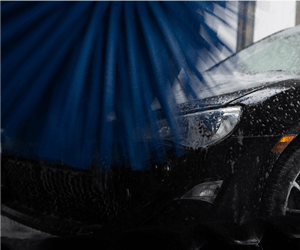
Pay What You Want
July 1, 2012
5 minute ReadThe English rock band Radiohead made it work, and Panera Bread Co. has been having some success with it in a few special locations. But can letting customers decide what to pay for a product a service — the so-called Pay What You Want (PWYW) pricing strategy — become a sustainable long-term model?
Radiohead was one of the first to try the PWYW pricing strategy in 2007 when it released its album In Rainbows on its website. Radiohead invited people to download the album and pay what they thought it was worth. The experiment earned the band great publicity and lots of interest from the public; there were three million In Rainbows albums downloaded or bought in CD format, compared to a few hundred thousands in sales for earlier releases.
The PWYW experiment was also a financial success for Radiohead. Even before the physical CD was released and sold at a set price, the band had earned more money from its release than it ever had before on a CD.
Despite the positive economic outcome of the PWYW pricing for its In Rainbows release, however, Radiohead set a fixed price for its next album in 2011.
In Brazil, meanwhile, 24/7 Cultural is selling books in vending machines that allow customers decide how much to pay. The company has set a minimum price of two Brazilian reals, however, and most purchasers stick to that. Although the company reported a doubling of its sales on these machines, there’s no information about whether it actually made money using this system. One drawback to the minimum pricing is the lack of incentive for most people to pay more than that required amount.
The Humble Music Bundle (www.humblebundle.com), on the other hand, gave purchasers a reward for generosity. Humble ran a two-week buying opportunity featuring downloadable music cuts from five well-known artists at whatever price people wanted to pay. Those who donated more than the average price of $8.26 received access to special remixes of some songs.
Purchasers also had options in deciding what percent of their payment should go to the artists, to two charitable groups and/or to the Humble site itself to help with expenses.
Panera’s experiment with PWYW pricing also has a charitable twist. It’s part of the company’s effort to give back to the community by helping down-on-their-luck consumers get a good meal. The four “Panera Cares” cafes in Missouri, Michigan, Oregon and Illinois look and function like a typical Panera restaurant but provide customers with a “suggested donation” for their meal instead of a fixed price.
According to a March 2012 report in the Chicago Tribune, Panera has found that 20 percent of customers pay more than the suggested donation, while another 20 percent pay less; the rest pay the suggested donation. Although “the Panera Cares community cafe model is designed to be self-sustaining with support from the community,” according to a company news release, they do receive support from the Panera Foundation.
It’s unclear, however, whether PWYW can actually work long term. Several restaurants that have tried PWYW have discontinued it, according to a May 2010 article in The New York Times. Restaurant owners have found that while some people do take advantage of the PWYW model by paying little or nothing for their meal, even more diners are simply made uncomfortable by the concept. It discourages them from eating at the restaurant.
That confirms recent research by University of California researchers who studied people’s reactions to PWYW pricing. Faced with this model, many people worry that they’re not paying enough, which causes anxiety and deters them from making a purchase. But the researchers also found that coupling a PWYW pricing model with a charitable contribution led people to make larger contributions than they might have otherwise (and also helps them feel better about themselves).
PWYW: Possible Short-Term Marketing Tool
Could PWYW pricing work for the car wash industry?
“To date, no car wash company has tried this pricing model, at least, not any that I could find through research. However, I do believe that it could be viable,” says Andrew Schrage, co-owner of Money Crashers Personal Finance (www.Moneycrashers.com). “Many consumers view the price of car washes as expensive, and washing a vehicle is something they can do themselves to save money. If such a pricing model were introduced, however, it could potentially improve sales.
“However, I would not recommend opening a car wash with PWYW pricing as a long-term strategy, as the financial risks are too substantial for a new business. But it could be useful as a short-term marketing tool to expose customers to the business,” Schrage added.
Car washes could also use PWYW as a means to generate derivative income from other products and services.
“If a car wash were going to utilize this method, it should look for ways to offer other products with high profit margins, such as car cleaning supplies, snacks and drinks,” Schrage said. “In addition, studies have shown that when businesses offer PWYW with a portion of the proceeds going to charity, the average price paid is roughly five times higher than a company using PWYW without a charitable aspect.”
Social media also could play a key role in determining the success of a car wash’s PWYW strategy.
“Social media is free and easy to set up,” Schrage said. “However, it must be understood that social media pages aren’t viable unless the company interacts with potential clients. The owner (or marketing representative) needs to monitor such accounts and respond to all questions and inquiries promptly and thoroughly.”
A car wash business that wants to try PWYW pricing should definitely have an exit strategy ready if the model doesn’t work or stops working, Schrage continued.
“For example, if the lowest possible price you can accept to earn a profit is $4 per customer, the strategy should be suspended as soon as the average price paid falls below this mark. Return to utilizing fixed prices, and reevaluate or revisit PWYW at a later date.”
Car wash owners can limit their risk by planning out their PWYW strategy and monitoring it on a timely basis, Schrage said.
“While it’s not necessary to use the idea strictly for profits, a business must know what revenues it generates. Of course, if these revenues become too low, utilization of the method should be ceased temporarily and revisited at a later time.”








